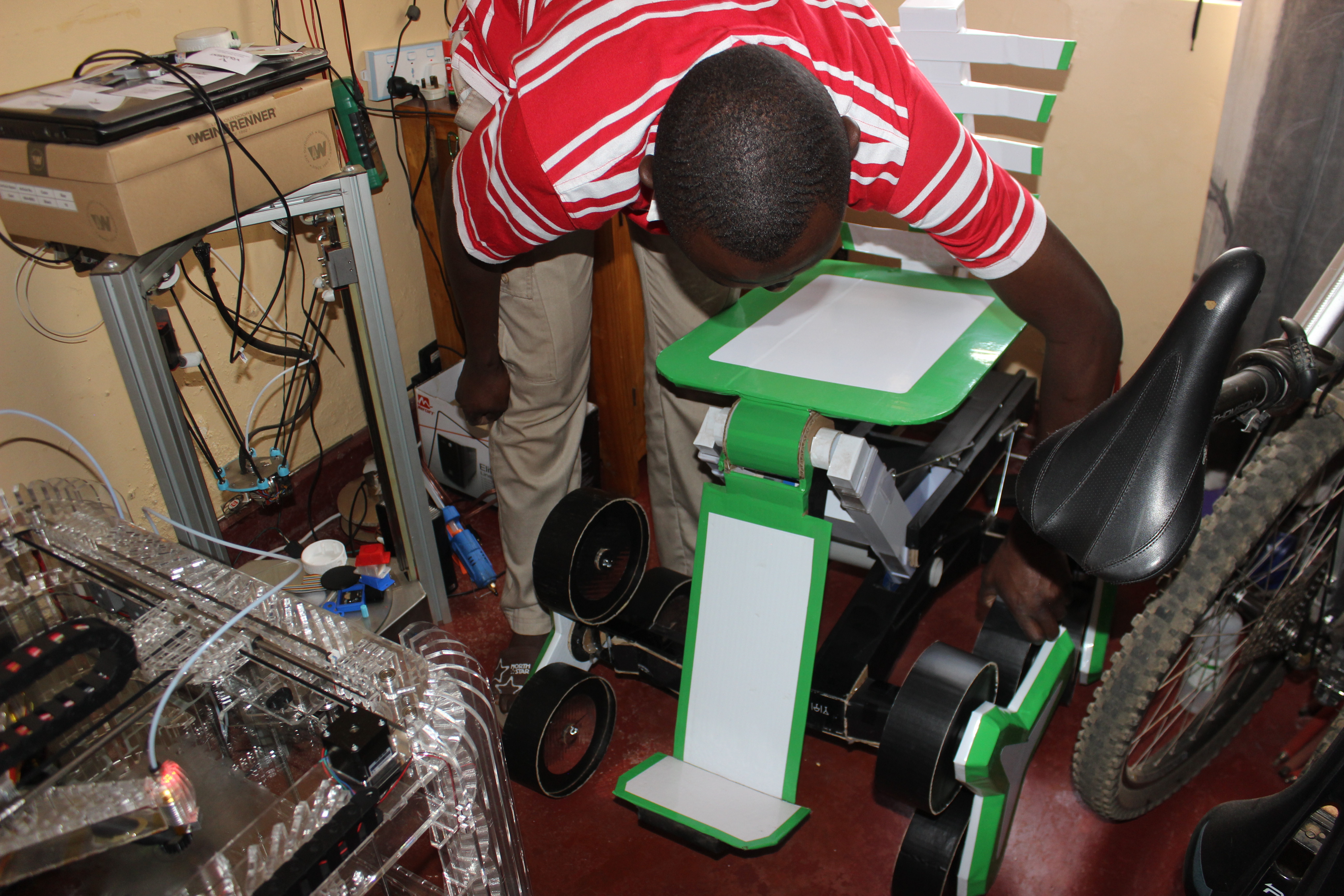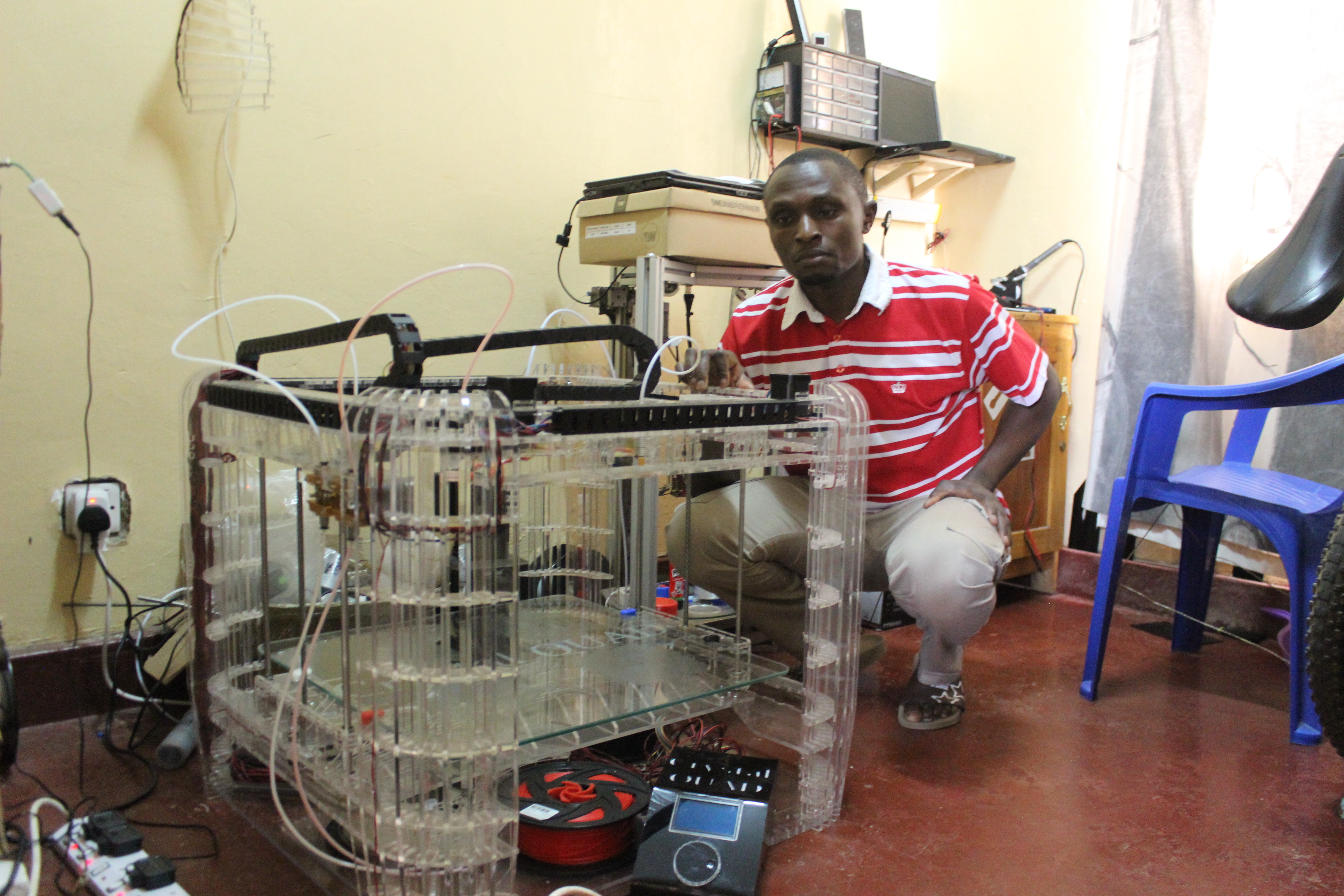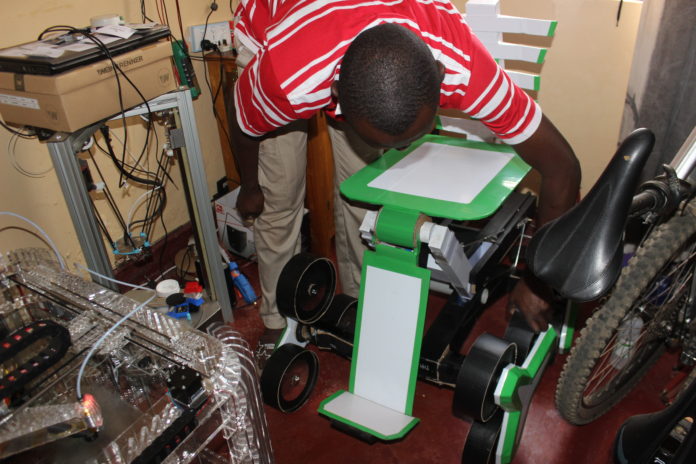By Lilian Museka
Technology and innovations have become part of Kenya’s daily happenings as new inventions are taking place to help in bettering the lives of the citizens.
A paradigm shift is taking place in the country as skilled developers and innovators are springing up daily to build solutions for challenges facing Kenyans on day to day life.
The country was in July this year listed among the leading innovation hubs globally, ranking fourth in Africa.
The survey released by the World Intellectual Property Organizations (WIPO) ranked Kenya at position 78 globally and after South Africa, Mauritius and Morocco in Africa
For example, in 2007, Mpesa, a mobile money transfer service by Safaricom was developed in Kenya and has since become one of the leading services in the world.
However, most innovations have not really addressed the needs of the physically challenged persons in the society.
Last year, while launching the Association for the Physically Disabled of Kenya (APDK) strategic plan 2017-2020, First Lady Margaret Kenyatta called on the need to give higher priority in policy and legislation to ensure physically challenged people can easily access critical facilities including hospitals, schools, and restaurants.
She also called on innovators to come up with structures and equipment that can easily enable movement of the physically challenged to go about with their duties.

“We must enforce guidelines, existing standards, and legislation, and adopt attitudes to the benefit of all people of all ages, no matter their status in life,’ she said according to a press statement on the president.go.ke website of July 21st, 2007.
People living with the disability always rely on friends or prosthetic devices to perform their duties. Those impaired through accident or sickness always take time to accept their situations and also encounter challenges in finding the right devices to help them adjust.
“This is what happened to my friend when she was attacked by severe arthritis that forced her to use crutches. After some time, her situation worsened and was forced to use the manual wheelchair which has many limitations in our current infrastructure,” says Peter Mbiria, an innovator.
Mbiria who has a background in electrical and electronics engineering embarked on research to help his friend get a motorized wheelchair, adding that “ the cheapest I found cost USD 8,000, that could enable the user to move on a flat surface and stand. The one that could enable the user to tackle stairs was about USD 25,000 excluding importation and other costs, and this was very expensive.
In 2012, while trying to develop a wheelchair that would enable extreme mobility and independence to the user, Mbiria says his friend sadly passed away. “This broke my heart and I almost gave up on my new innovation,” he says.
According to census statistics of 2009, 3.5% of Kenya’s total population – are people living with disabilities. Of this figure, 31% are people with physical disabilities.
“If a significant percentage of the population is unable to move with ease or do basic tasks, their contribution to the economy is minimal. Worse still, other people have to assist them,” he says.
The former engineering student at the Technical University of Kenya becomes the first in Africa to invent the smart E-con wheelchair; designed bottom up to deliver mobility, independence, and comfort to persons with disability. The wheelchair can be adjusted to an upright position thereby enabling the user to be in a standing position and go about his duties.
In 2016, through his wheelchair model, he was selected among 16 finalists who were in the UK for the Africa Prize for Engineering Innovation by the Royal Academy of Engineering in London.

Mbiria was also able to meet and pitch to Prince Andrew, The Duke of York, at St. James Palace in March 2017, adding that “I met many other big companies that were willing to join me at the product stage of my wheelchair. It further gave me the courage to fasten the wheelchair. I didn’t manage to get funding but the network I got was priceless .”
Mbiria, however, failed to raise enough funds to develop more wheelchairs after that sampled one. He says he approached various organizations including Association for the Physically Disabled in (APDK) but no results came out.
In 2017, he got aid from The Royal Academy of Engineering who did intensive marketing and organized Engineering symposium where he met Dr. Timothy from Aston University based in London. It is through that collaboration that enabled him to make the Crystal QUAD 3D printer that he is using to improve the wheelchair model.
“I realized the previous models were somehow weak and needed to improve on them. I, therefore, applied for a local grant organized by Kenya National Innovation Agency (KENIA) where I got a grant Ksh. 150,000 ($1500). This is what I am using for my improvements. I want something that will be firm, can hold the weight of any person and can move on any kind of roads,” he adds.
Mbiria has since kept improving his wheelchair from the first model to the second and now the third. For the third model of the Smart E-con Wheelchair, it needed many moving parts, gears, belts, shafts, and many others things and the challenge was how to get its customized gears at low cost. His invention of the 3D printer, which he calls Crystal QUAD 3D printer, has made easy his work of printing parts of the wheelchair.”
It is a completely new design and made purely in Kenya. I am now using it to print parts (gears, shafts, adaptors etc) for the Smart E-con wheelchair.” He adds
The prototype wheelchair is all-terrain and allows users to stand upright, climb stairs and generally self-navigate.
It can also ascend or descend a flight of stairs and “walk” over obstacles while keeping the user level at all times.
Using two pairs of wheels, it can also go over bumps, curbs, and obstacles that would normally require considerable upper body strength but, usually, a push by an assistant or a ramp.
“It has a Gyro sensor at the center of the chassis that records any time the Y axis of the wheelchair tilts. These values are transferred in split seconds to a microcontroller that computes them accordingly using a loaded programme and gives them as output to the Servo,” he says.
He adds that “The Servo in turn tilts the chair minus the number of degrees recorded by the Gyro Sensor. For instance, if the Gyro sensor records a tilt of 10 degrees, the Servo will tilt the chair minus 10 degrees. This way, the user will be at a level and won’t even feel the movement.”
Gyro sensors, also known as angular rate sensors or angular velocity sensors, note the change in rotational angle per unit of time.
The complete Smart E-con wheel chair will be ready mid next year (2019). It will however be expensive (costing upto Ksh. 500,000), something Mbiria attributes to the materials used which are all imported. Asked how he will tackle this challenge, he says he will partner with interested organizations, sell to them who can then either donate to users or sell at a lower price.
“I have approached several organizations and individuals I can partner with and they are just waiting for the final product. One of my greatest motivator is Mr. Zack Kimotho of the famous ‘Bring Zack Back Home’ campaign by the Kenya Paraplegic Organization which raised Ksh.73 Million for the organization,” he says. Zack was confined to a wheelchair since 2004 when he was shot by carjackers in the spine and became paralyzed.
Mbiria also says he will register with the National Council for Persons with Disability (NCPD) so that he can apply for tax relief for import of the spare parts. This he says will bring the costs of the materials down thereby reducing the cost of the wheelchair.
Section 117 (2) of the customs and Exercise Act, not duty shall be levied on goods consigned for free distribution to the assistance of persons living with a disability. This Mbiria says will partner with the Red Cross who will in turn help in importing the spare parts.
The unique differences between the Smart E-con wheelchair and the manual one are that the E-con can be adjusted in an upright position to enable the user to go about his duties, unlike the manual which cannot. It also has wheels that can go up or down stairs or use any road surface. This is not so with the manual.
However, the cost of the manual wheelchair is lower. It ranges between Ksh.10,000 to 30,000(100-300 USD) depending on the make according to Jumia Kenya. Mbiria says currently there are no available spare parts for his invented wheelchair and he has since used almost Ksh 1million to assemble all parts Mbiria has since set up Voltarent Engineering Limited, an organization working on new inventions in Kenya.














